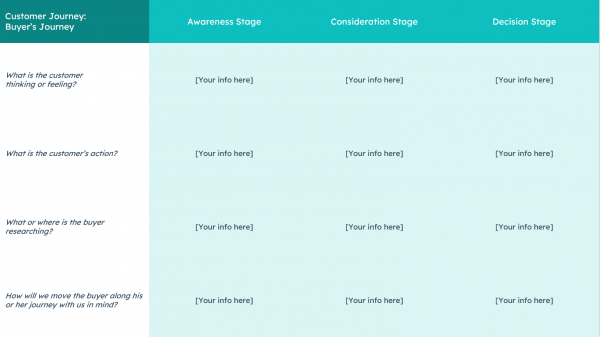As an entrepreneur in today’s highly competitive business world, understanding your customers’ experiences with your brand is highly important to the success of your business. One important tool that can help you in this regard is customer journey mapping.
Read more about Business
It is a tool that visually represents the customer’s journey with your brand, from the first interaction to the final transaction. Creating an effective customer journey map for your business is an important business strategy that can significantly enhance customer satisfaction and drive growth.
This article provides information about customer journey mapping; why it’s crucial, and how to create an effective map for your business.
What is Customer Journey Mapping?
Customer journey mapping is a visual representation of a customer’s steps when interacting with your business. These interactions can occur across various touchpoints, such as social media, websites, customer service, and physical stores. The goal is to understand the customer’s needs, emotions, and pain points at each stage, allowing you to optimize the overall customer experience.
A well-crafted customer journey map will help you step into your customers’ shoes, offering insights into how they perceive your brand at different stages.
Why is Customer Journey Mapping Important?
The market today is a dynamic one, customer expectations are continually shifting. Consumers are increasingly demanding personalized experiences every step of the way. A report by Qualtrics highlights that a significant percentage of consumers are willing to switch brands if their expectations are not met, making it necessary for businesses to understand and anticipate customer needs. Also, a study by Salesforce shows that 73% of consumers expect companies to understand their needs and preferences. Failing to meet these expectations can lead to customer dissatisfaction and even brand switching—something that has affected 71% of consumers in the past year alone.
Customer journey mapping will allow you to understand these by providing a clear picture of your customer’s experience from start to finish. It will enable you to identify gaps in service delivery, improve customer satisfaction, and increase customer loyalty. Also, with the roles which word-of-mouth and social proof hold in shaping consumer behaviour in Nigeria, enhancing the customer journey can lead to more positive reviews and referrals thereby, boosting brand reputation and growth.
Steps to Create a Customer Journey Map
1. Define Your Objectives and Goals
Before starting to map your customer journey, it’s important to define what you hope to achieve with your customer journey map. Are you looking to improve customer satisfaction, reduce churn rate, or increase sales? Understanding your goals will guide the mapping process and help you focus on the most critical touchpoints.
Sign up for the Connect Nigeria daily newsletter
2. Identify Your Customer Personas
A customer persona is a semi-fictional representation of your ideal customer based on market research and real data about your existing customers. Developing detailed buyer personas helps you segment your audience and tailor the journey to their specific needs. For example, a typical Nigerian Gen Z might interact with your brand differently from an older generation customer. They might discover your product through Instagram ads, while an older customer might come across it through a recommendation from a friend or a physical store visit.
3. Map Out the Customer Journey Stages
Next, break down the customer journey into stages. These typically include awareness, consideration, purchase, and post-purchase. For each stage, identify the touchpoints where customers interact with your brand. For example, in the awareness stage, a customer might encounter your brand through social media ads or word-of-mouth. In the consideration stage, they might visit your website or read reviews. Mapping out these stages allows you to visualize the entire journey and identify potential bottlenecks.
Below is a typical customer journey mapping.

4. Gather Customer Feedback and Data
To create an accurate customer journey map, gather data directly from your customers. You can do this through surveys, interviews, or analysing customer feedback from social media and other channels. Ask customers about their experiences—what they liked, what frustrated them, and what they think could be improved.
5. Identify Pain Points and Opportunities
Once you’ve mapped out the customer journey and gathered feedback, it’s time to analyze the data to identify pain points—areas where customers experience friction or dissatisfaction. For example, long wait times at your physical store or a complicated checkout process on your website could be significant pain points. Identifying these issues allows you to take corrective actions and improve the customer experience.
6. Optimize and Implement Changes
With the insights gained from your customer journey map, you can now optimize the customer experience. This might involve redesigning your website for better usability, retraining customer service staff, or enhancing your product offerings.
Register to attend the CN Business Mixer
7. Measure and Refine
Finally, it is important that customer journey mapping is not a one-time exercise. It’s essential to continuously measure the effectiveness of the changes and refine your map as needed. Regularly updating your customer journey map ensures it remains relevant and aligned with evolving customer expectations.
Featured Image Source: The Big Bang Partnership
Got a suggestion? Contact us: [email protected]


